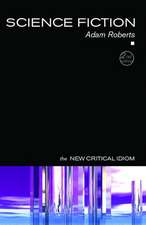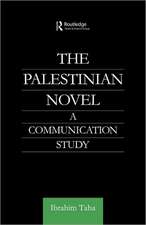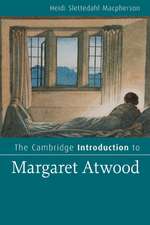Entranced by Story: Brain, Tale and Teller, from Infancy to Old Age: Children's Literature and Culture
Autor Hugh Cragoen Limba Engleză Paperback – 29 ian 2016
Entranced by Story applies recent research on brain function to literary examples ranging from the Iliad and Wuthering Heights to Harold and the Purple Crayon, providing a groundbreaking exploration of the biological and neurological basis of the literary experience. Blending research, theory, and biographical anecdote, the author shows how it is the unique structure of the human brain, with its layering of sophisticated cognitive capacities upon archaic, emotion-driven functions, which best explains the mystery of story.
| Toate formatele și edițiile | Preț | Express |
|---|---|---|
| Paperback (1) | 340.85 lei 3-5 săpt. | +20.08 lei 6-12 zile |
| Taylor & Francis – 29 ian 2016 | 340.85 lei 3-5 săpt. | +20.08 lei 6-12 zile |
| Hardback (1) | 1117.43 lei 6-8 săpt. | |
| Taylor & Francis – 28 apr 2014 | 1117.43 lei 6-8 săpt. |
Din seria Children's Literature and Culture
- 8%
 Preț: 381.91 lei
Preț: 381.91 lei -
 Preț: 373.15 lei
Preț: 373.15 lei -
 Preț: 369.71 lei
Preț: 369.71 lei -
 Preț: 310.36 lei
Preț: 310.36 lei - 9%
 Preț: 1005.31 lei
Preț: 1005.31 lei -
 Preț: 369.45 lei
Preț: 369.45 lei - 8%
 Preț: 464.67 lei
Preț: 464.67 lei - 9%
 Preț: 1004.18 lei
Preț: 1004.18 lei -
 Preț: 370.28 lei
Preț: 370.28 lei - 28%
 Preț: 877.59 lei
Preț: 877.59 lei - 18%
 Preț: 1113.25 lei
Preț: 1113.25 lei -
 Preț: 432.87 lei
Preț: 432.87 lei - 18%
 Preț: 1007.82 lei
Preț: 1007.82 lei - 15%
 Preț: 461.65 lei
Preț: 461.65 lei - 18%
 Preț: 942.92 lei
Preț: 942.92 lei - 18%
 Preț: 1058.43 lei
Preț: 1058.43 lei - 18%
 Preț: 1106.05 lei
Preț: 1106.05 lei - 18%
 Preț: 1117.77 lei
Preț: 1117.77 lei - 18%
 Preț: 1117.07 lei
Preț: 1117.07 lei - 18%
 Preț: 1057.26 lei
Preț: 1057.26 lei - 28%
 Preț: 824.70 lei
Preț: 824.70 lei - 34%
 Preț: 409.04 lei
Preț: 409.04 lei - 18%
 Preț: 1055.66 lei
Preț: 1055.66 lei - 18%
 Preț: 1058.43 lei
Preț: 1058.43 lei - 18%
 Preț: 1114.30 lei
Preț: 1114.30 lei - 18%
 Preț: 1109.04 lei
Preț: 1109.04 lei - 18%
 Preț: 1111.87 lei
Preț: 1111.87 lei -
 Preț: 491.68 lei
Preț: 491.68 lei - 18%
 Preț: 1061.22 lei
Preț: 1061.22 lei - 18%
 Preț: 1058.79 lei
Preț: 1058.79 lei - 18%
 Preț: 1117.77 lei
Preț: 1117.77 lei - 18%
 Preț: 1057.40 lei
Preț: 1057.40 lei - 18%
 Preț: 1055.51 lei
Preț: 1055.51 lei - 18%
 Preț: 1055.51 lei
Preț: 1055.51 lei - 31%
 Preț: 352.20 lei
Preț: 352.20 lei -
 Preț: 482.74 lei
Preț: 482.74 lei - 18%
 Preț: 1058.43 lei
Preț: 1058.43 lei - 15%
 Preț: 544.28 lei
Preț: 544.28 lei - 18%
 Preț: 1059.14 lei
Preț: 1059.14 lei - 28%
 Preț: 822.36 lei
Preț: 822.36 lei - 18%
 Preț: 1113.25 lei
Preț: 1113.25 lei - 18%
 Preț: 1054.75 lei
Preț: 1054.75 lei - 25%
 Preț: 771.71 lei
Preț: 771.71 lei - 18%
 Preț: 1066.72 lei
Preț: 1066.72 lei - 18%
 Preț: 1006.43 lei
Preț: 1006.43 lei
Preț: 340.85 lei
Nou
Puncte Express: 511
Preț estimativ în valută:
65.22€ • 67.96$ • 54.00£
65.22€ • 67.96$ • 54.00£
Carte disponibilă
Livrare economică 13-27 martie
Livrare express 26 februarie-04 martie pentru 30.07 lei
Preluare comenzi: 021 569.72.76
Specificații
ISBN-13: 9781138654211
ISBN-10: 1138654213
Pagini: 286
Dimensiuni: 152 x 229 x 15 mm
Greutate: 0.39 kg
Ediția:1
Editura: Taylor & Francis
Colecția Routledge
Seria Children's Literature and Culture
Locul publicării:Oxford, United Kingdom
ISBN-10: 1138654213
Pagini: 286
Dimensiuni: 152 x 229 x 15 mm
Greutate: 0.39 kg
Ediția:1
Editura: Taylor & Francis
Colecția Routledge
Seria Children's Literature and Culture
Locul publicării:Oxford, United Kingdom
Public țintă
Postgraduate and UndergraduateCuprins
Introduction: Entranced by Story 1. ‘Bothe Blysse and Blunder’: How Stories Begin 2. ‘A Hole in the World’: Self and Story in the Preschool Years 3. ‘A Place of Greater Safety’: Stories in Middle Childhood 4. The Age of Romance: Self and Story in Adolescence 5. ‘I Would Build That Dome in Air’: Story Making in Young Adulthood 6. Remembering, Repeating and Foreshadowing: Midlife and Memory 7. Light at the End of the Tunnel: Storytelling in Old Age Conclusion: The Brain, the Tale and the Teller
Recenzii
"This is an individual book, although very much ‘on trend’, by an individualist: Hugh Crago has spent his career on the periphery of academic disciplines, pushing at boundaries and making unusual links, and so what we have here is a product of a lifetime of originality. It is coherent, logical, and inspiring - positively glittering with ideas. The mix of theory, science, literary reference, anecdote and empiricism is difficult to resist." -- Peter Hunt, University of Cardiff, UK (Emeritus)
"Even though many of its examples and detailed analyses are drawn from English literature, and unfamiliar to me, I still read this book with great pleasure and profit. It is not necessary to know the quoted works in detail in order to follow Crago’s argument, especially as his style is graceful and accessible. Reading the book is like listening to an experienced and entertaining guide. Clearly, this is the sort of book that is driven by the author’s authentic interest. Such a book can’t be written as some sort of a commissioned piece. In this respect, the book is not merely a repository of ideas on literary content and themes, but in itself constitutes an elegant example of the richness opened up by a passionate, committed quest for meaning in human culture. I heartily recommend this book, particularly since it might be overlooked compared to the run-of-the-mill literature that professionals must constantly scan. Its advantage is that it opens up a wide vista, and beckons us towards a perspective on human existence that is both far-reaching and enduring." -- Wolfgang Loth, in Zeitschrift für Systemische Therapie und Beratung (September 2015): 135-136.
"This is a book of extraordinary scope and ambition. Hugh Crago aims for nothing less than a ‘unified theory of Story’ (230) integrating left and right hemispheres, author and reader, genre and aging. He is intrigued with something that seems beyond the purview of modern literary criticism: shared entrancement, the sensation experienced both by the inspired and compelled author and by the identifying reader who merges Story to their childhood experience. Crago is brilliant, erudite, knowledgeable about authors and readers, a commanding storyteller himself, and a meticulous editor." --Ralf Thiede, The University of North Carolina at Charlotte, Children’s Literature Association Quarterly 40, 1 (Spring, 2015): 85-88.)
"Crago’s ground-breaking book has all that one expects of a visionary work: it teems with fresh ideas, sheds new light on the long-debated questions of creativity or readerly entrancement and contains bold political statements about the marginalisation of Old Brain narratives, ‘naïve’ readers and psychologism in literary criticism. More importantly, it does fulfill its central aim of grasping the essence of story without depriving that story of its magic … Crago’s non-fiction story about story is to entrance, inspire and provide a stimulating starting point for further research." --Mateusz Mareki, University of Wrocklaw, Poland, International Research in Children’s Literature, May 2015: 97
"I can find no other book in the same genre as Entranced by Story. Crago’s book is an innovative approach, which applies psychoanalytic theory and developmental psychology to understand the engagement of writers and readers in story. Who should read this book? Those who write, those who read, and those who want to know more about their own inner world and its unconscious themes and plots." --Ione Lewis, Australian College of Applied Psychology, Psychotherapy in Australia 21, 1: November, 2014: 112
"A unique and intriguing look at what stories do not only for those who read them but especially for those who write them. To explore this question Hugh Crago weaves together recent research on brain function with the lives of story-makers beginning with toddlers’ babbling, moving through childhood, adolescence, and adulthood, as each stage brings with it changes in the ways stories are told and the motivations that inspire the telling. This book makes an invaluable contribution to our understanding of the importance of stories in human life." – Cristina Bruns, Chapman University, USA
"This important and thought-provoking contribution to the world of ideas is an extremely well-written book. While unusually cross-disciplinary, it is also easy to read: Crago wears his scholarship lightly as he points out multiple research links. He writes about "story" in general, not just about children’s stories -- although of course that’s where it all begins. Adults who are young at heart will be entranced by this voyage of discovery into why it is that we all love stories and what they mean to our lives." – Jessica Milner Davis, University of Sydney, Australia
"The most stimulating book I’ve read so far this year … Crago draws from a seemingly endless knowledge of stories in all forms, and their creators, to not only illuminate the inner quests of the story’s creator, but also to uncover the emotional, psychological and cognitive effect stories have on those reading/viewing them … It’s such a wonderfully readable yet intricately woven book that I’ve delighted in dipping back into it ever since finishing it." -- James lePaul in The Gleaner, September, 2014
"Even though many of its examples and detailed analyses are drawn from English literature, and unfamiliar to me, I still read this book with great pleasure and profit. It is not necessary to know the quoted works in detail in order to follow Crago’s argument, especially as his style is graceful and accessible. Reading the book is like listening to an experienced and entertaining guide. Clearly, this is the sort of book that is driven by the author’s authentic interest. Such a book can’t be written as some sort of a commissioned piece. In this respect, the book is not merely a repository of ideas on literary content and themes, but in itself constitutes an elegant example of the richness opened up by a passionate, committed quest for meaning in human culture. I heartily recommend this book, particularly since it might be overlooked compared to the run-of-the-mill literature that professionals must constantly scan. Its advantage is that it opens up a wide vista, and beckons us towards a perspective on human existence that is both far-reaching and enduring." -- Wolfgang Loth, in Zeitschrift für Systemische Therapie und Beratung (September 2015): 135-136.
"This is a book of extraordinary scope and ambition. Hugh Crago aims for nothing less than a ‘unified theory of Story’ (230) integrating left and right hemispheres, author and reader, genre and aging. He is intrigued with something that seems beyond the purview of modern literary criticism: shared entrancement, the sensation experienced both by the inspired and compelled author and by the identifying reader who merges Story to their childhood experience. Crago is brilliant, erudite, knowledgeable about authors and readers, a commanding storyteller himself, and a meticulous editor." --Ralf Thiede, The University of North Carolina at Charlotte, Children’s Literature Association Quarterly 40, 1 (Spring, 2015): 85-88.)
"Crago’s ground-breaking book has all that one expects of a visionary work: it teems with fresh ideas, sheds new light on the long-debated questions of creativity or readerly entrancement and contains bold political statements about the marginalisation of Old Brain narratives, ‘naïve’ readers and psychologism in literary criticism. More importantly, it does fulfill its central aim of grasping the essence of story without depriving that story of its magic … Crago’s non-fiction story about story is to entrance, inspire and provide a stimulating starting point for further research." --Mateusz Mareki, University of Wrocklaw, Poland, International Research in Children’s Literature, May 2015: 97
"I can find no other book in the same genre as Entranced by Story. Crago’s book is an innovative approach, which applies psychoanalytic theory and developmental psychology to understand the engagement of writers and readers in story. Who should read this book? Those who write, those who read, and those who want to know more about their own inner world and its unconscious themes and plots." --Ione Lewis, Australian College of Applied Psychology, Psychotherapy in Australia 21, 1: November, 2014: 112
"A unique and intriguing look at what stories do not only for those who read them but especially for those who write them. To explore this question Hugh Crago weaves together recent research on brain function with the lives of story-makers beginning with toddlers’ babbling, moving through childhood, adolescence, and adulthood, as each stage brings with it changes in the ways stories are told and the motivations that inspire the telling. This book makes an invaluable contribution to our understanding of the importance of stories in human life." – Cristina Bruns, Chapman University, USA
"This important and thought-provoking contribution to the world of ideas is an extremely well-written book. While unusually cross-disciplinary, it is also easy to read: Crago wears his scholarship lightly as he points out multiple research links. He writes about "story" in general, not just about children’s stories -- although of course that’s where it all begins. Adults who are young at heart will be entranced by this voyage of discovery into why it is that we all love stories and what they mean to our lives." – Jessica Milner Davis, University of Sydney, Australia
"The most stimulating book I’ve read so far this year … Crago draws from a seemingly endless knowledge of stories in all forms, and their creators, to not only illuminate the inner quests of the story’s creator, but also to uncover the emotional, psychological and cognitive effect stories have on those reading/viewing them … It’s such a wonderfully readable yet intricately woven book that I’ve delighted in dipping back into it ever since finishing it." -- James lePaul in The Gleaner, September, 2014
Descriere
We live in a world of stories; yet few of us pause to ask what stories actually are, why we consume them so avidly, and what they do for story makers and their audiences. This book explores a wide range of literature together with recent research on brain function to provide an invaluable and thought-provoking link between literary and psychological studies. With a unique blend of research, theory and biographical anecdote, the author contends that it is the unique structure of the human brain, with its layering of sophisticated cognitive capacities upon archaic, emotion-driven functions, that best explains the mystery of story.


















